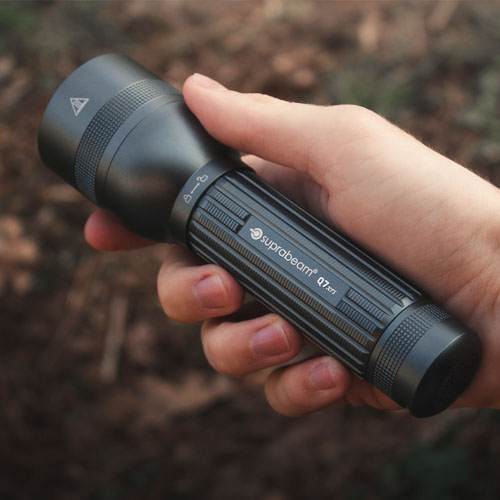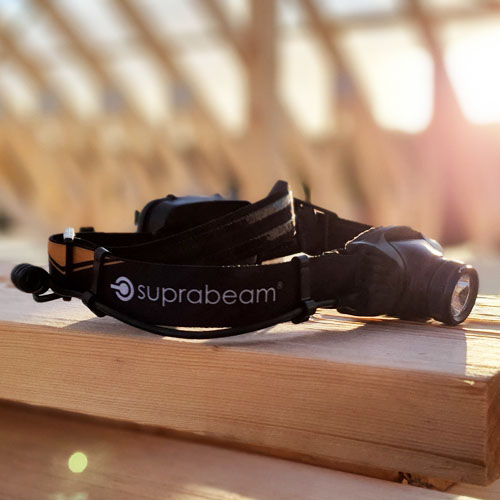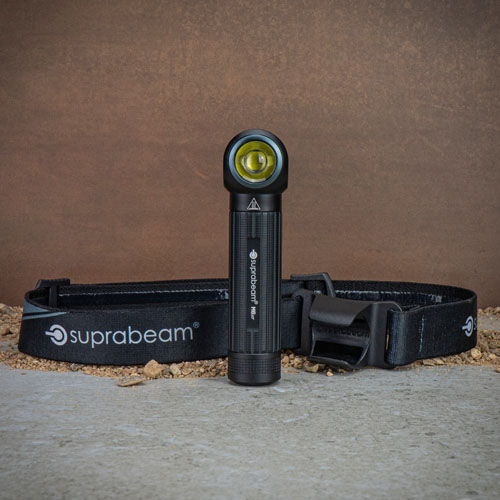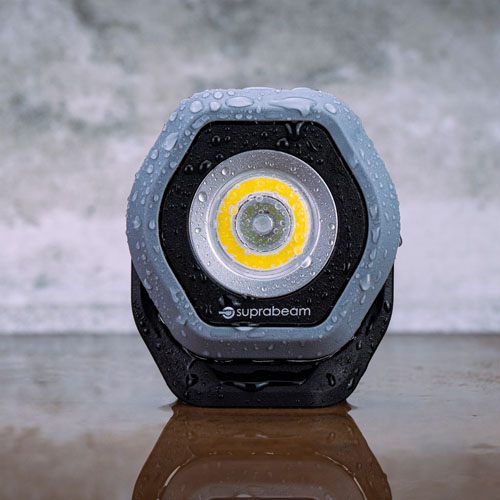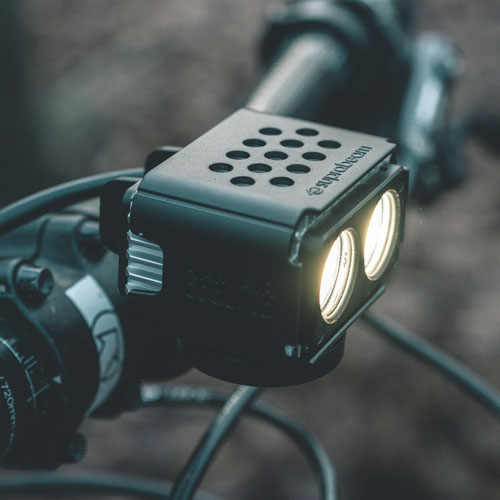Lumen to lux
Use the calculator to convert lumen to lux
In the world of flashlights and headlamps, lumen is king. It is the number one most heavily marketed specification and the first thing people look for when choosing a flashlight or headlamp. But it is not the only unit that can be used to describe how bright a light is.
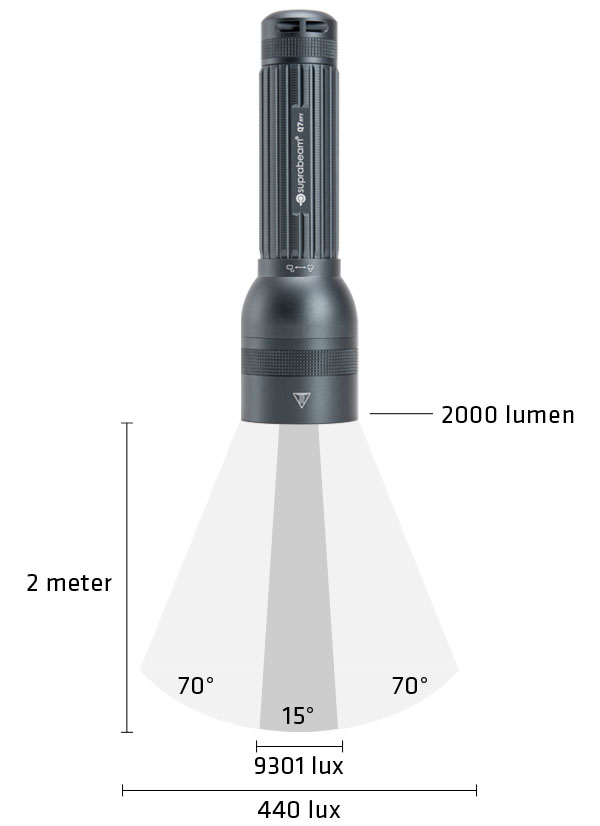
Lumen to lux
What is lumen and lux? And how can the units be used to find the right light for the job.
Lumen (lm) is the total amount of light emitted from a flashlight or headlamp, so the more lumen a light has the brighter it is – roughly. Lumen is measured in a closed sphere that captures all the light emitted from the light source, but it does not take the optics into account. This is why the number of lumen not necessarily corresponds to how bright the light appears in reality. And this is where lux comes into the picture.
Lux (lx) is also a unit used to measure light but unlike lumen, lux takes area into account. Lux is used to determine the intensity of the light over an illuminated area, to be specific; 1 lux equals 1 lumen pr. m2. A flashlight or headlamp cannot be marketed with a specific amount of lux, because it depends on how far away the light source is and the angle of the light beam. Lux can be measured using a lux meter.
If you use a Suprabeam Q7xrs with 2000 lumen to light up a wall 2 meters away, there will be 440 lux on the wall if you use the wide 70° flood beam, but 9301 lux if you use the Hyperfocus to focus the beam into a 15° spot beam. When using the 70° flood beam all the lumen from the Q7xrs is spread out over a larger area, and when using the 15° spot beam all the lumen is focused into a very small area.
In reality lux can be used to specify how much light is required on a construction site or in an office, to be able to work safely and efficiently.
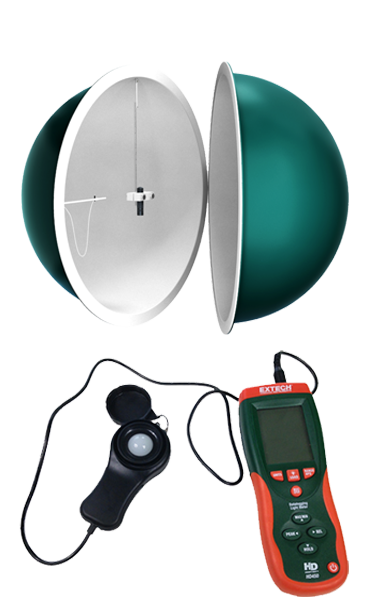
Find you beam angle
How can you measure your beam angle?
Many manufacturers do not inform about the beam angle, so we have made a calculator to help you. This is how you can measure the beam angle of your light.
- Place the flashlight/headlamp 1m away from a wall
- Measure the diameter of the light beam
- Enter the diameter in the calculator
This calculator only work if the edge of the light beam is clearly visible. If the light beam is diffuse you cannot measure the diameter of the light beam.
How many lux do you need?
What is required and what is enough
How many lux you need depends on the job situation, but also on safety measures. The European standard EN 12464-2 states how many lux that are required for different indoor and outdoor jobs. As an example outdoor construction sites are required to have 20-200 lux depending on the job. The EN 12464-2 (outdoor section) states that an outdoor construction site must have 20 lux worth of light for jobs like “clearance, excavating and loading” but 200 lux for jobs like “Element jointing, demanding electrical, machine and pipe mountings”. But how much is 200 lux, and is it enough light for you? For comparison a office desk is required to have 500 lux.
How do you pick the right lamp for the job?
If you already use a flashlight or headlamp you can type in the specifications to see how many lux it provides at different distances. If you do not already use a flashlight or headlamp but you know how you would be using it, you can use the calculator to specify how many lumens you would need to obtain a certain lux level.
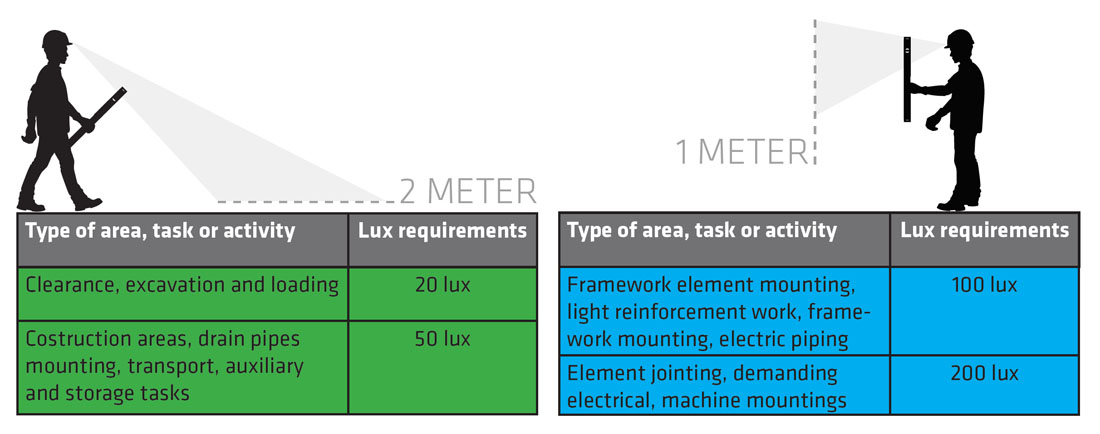
The work behind the calculator
How do we convert lumen to lux? And what should you be aware of.
One lux equals one lumen pr. m2, so to calculate the amount of lux we need to know how big the illuminated area is. When calculating the illuminated area at a certain distance, you will have to make sure that the calculation is made with same distance for the entire light beam, since the light intensity (lux) depends on the distance. We account for this in our calculation by imagining the light source in the very center of a sphere, because then you have the exact same distance in every direction and therefore the same light intensity in the entire illuminated area. See illustration below.
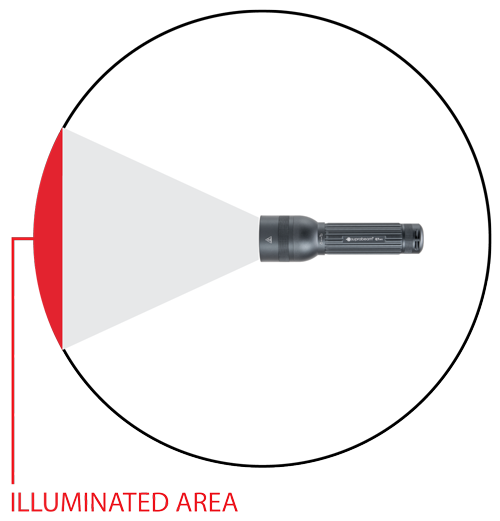
Assumptions
Flashlights and headlamps from different brands are constructed very differently which reflects in how efficiently they perform. Therefore we have had to make some assumptions in order to make this calculator.
In the calculation loss of light from the optics have not been taken into account. No flashlight/headlamp optics are efficient enough to direct 100% of the light emitted from the LED into a perfect angled beam. No matter the manufacturer there will always be some loss of light because of the optics.
Some flashlights and headlamps have a focussing system, meaning that the light can be directed from a wide beam into a spot beam. When using the focussing to create a spot beam there will be a higher loss of light than when using the wide beam. This extra loss is not reflected in the calculator.
Another assumption we have made is that the light is evenly distributed over the illuminated area. This would also not be true in most cases, since a LED never distributes the light evenly.
To sum up: In the calculation 100% of the light emitted from the LED is directed perfectly into an angled beam which illuminates an area 100% evenly. This will never be the case, but are assumptions that have had to be made in order for this calculator to work. However, you can still get a pretty precise idea of how many lux a light delivers in a certain area.
